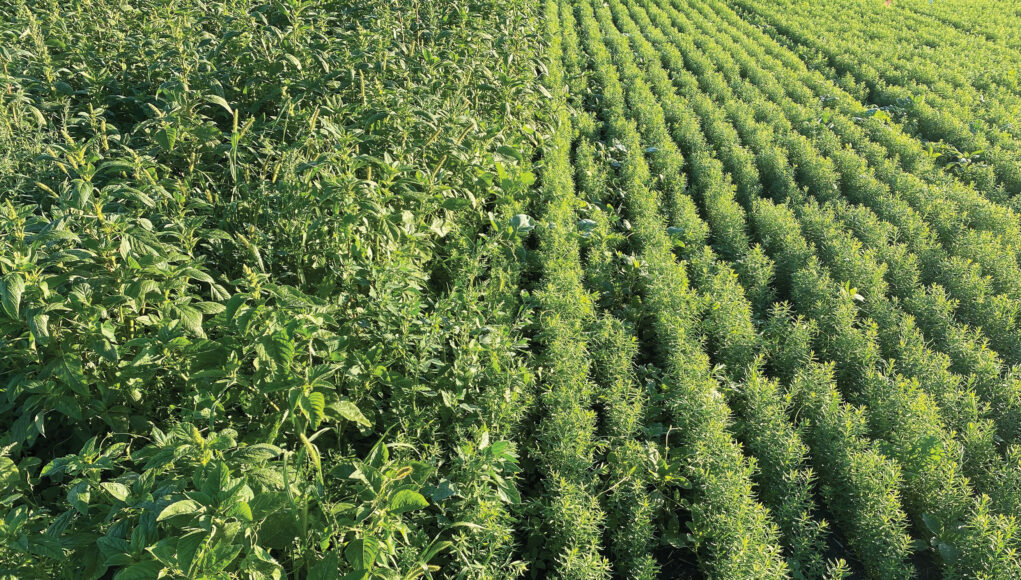By Tammy Jones
Shifting weed patterns, weather patterns and herbicide resistance have added to the complex issue of weed control. Utilizing different tank mix partners can enhance weed control, provide soil residual control and/or delay the development of herbicide resistance. But adding a tank-mix partner isn’t the only factor in ensuring a herbicide application is effective. While many choose to rely on in-crop herbicide applications, there is a strong business case for pre-seed herbicide applications and there are some significant benefits to applying some of these herbicides in the fall.
First off, there are those who would debate the need for pre-seed herbicides. A pre-seed herbicide application may not be required on every field. Tillage, cover crops, altering seeding dates and early establishment of competitive crops are all good options for fields with low weed pressures. But there are several crops that benefit immensely from pre-seed herbicides, those that are a little less competitive, including peas, lentils, flax, soybean, corn and even canola. Additionally, the number of herbicides registered for in-crop use with some of these crops is very limited.
Fall is typically a time for post-harvest weed control, but it’s never too early to start setting up next year’s crop for success. Rather than focusing on the huge opportunity to clean up perennials and winter annuals, let’s consider the benefits of a soil residual herbicide tank-mix partner. A soil residual optimizes the fall operation by providing extended control of weeds for next year’s crop. Some fall-applied soil residual herbicides will control summer annuals until mid-May or early-June. According to studies from the University of Lincoln-Nebraska, this practice can eliminate the need for a preemergence herbicide application in the spring and protect yields until a timely postemergence application can be made.
The trade-off is that an extended control herbicide may limit the crop options. Given that certain weeds are almost impossible to control effectively in specific crops, that trade-off becomes relatively minor. For instance, kochia control in peas, a crop that relies heavily on Group 2 herbicides, will not provide effective control of Group 2-resistant kochia. Another example is the use of in-crop glyphosate applications which do not effectively control weeds resistant or naturally tolerant to glyphosate, like wild buckwheat, waterhemp and kochia. Furthermore, herbicides that might be effective on troublesome weeds are not always tolerated by the crop.
Active ingredients classified in herbicide groups 3, 13, 14 and 15 offer several soil residual herbicides rarely used in-crop, providing good herbicide rotation options. Some of these active ingredients are volatile and require incorporation, while others require a minimum amount of soil moisture in order to be taken up by germinating weeds. One of the upsides to fall application is there is more time for diffusion or dispersion for a consistent layer of protection to form, ensuring uniform weed control in the spring. Additionally, the snowmelt can provide the required soil moisture for activation since spring showers are not always delivered when needed. Winter months’ cold soil temperatures slow or halt herbicide breakdown to ensure the herbicide is available as soon as growing conditions are favourable. The extended control period of these herbicides varies, as do the weed spectrums, so this isn’t a ‘one-size fits all’ decision.
Early season weed control with unique active ingredient(s) can provide flexibility in timing, help improve the effectiveness of the in-crop herbicide and reduce the probability of herbicide resistance developing. Whether it’s caused by dry conditions or an abbreviated window of protection based on environmental factors, weeds that germinate in the spring but escape through the herbicide application tend to be smaller, less competitive and more susceptible to an in-crop herbicide application. While the herbicide dose will not remain lethal indefinitely, crop competition will enhance the suppression of later emerging weeds. The one-two-punch of a pre-seed and highly effective in-crop herbicide can help reduce the amount of weed seed contributed to the seedbank for future years.
Time management is another critical factor in the decision for a fall application of herbicide. This past spring exemplifies the challenges of seeding into extremes. While there was drought in many areas last season, there was excess moisture in many other areas early this year. Rushing to get the seeder/planter into the field to meet internal or insurance deadlines meant that many fields did not receive any weed control activities in the spring and in-crop herbicides were challenged due to weed stage, crop stage or lack of suitable herbicide for in-season application.
In review, using a fall-applied herbicide application with a soil residual herbicide provides an extensive list of benefits, including but not limited to: time management; the ability to use herbicide groups that may not be utilized in-crop; controlling weeds when they are small to reduce crop competition; herbicide resistance management for some key weed species; saving nutrient and water resources; helping to reduce overall costs; and, keeping those weeds guessing.
So, for fields with challenging weeds where the crop rotation has a less competitive crop planned next season, it’s time to change it up with a soil active herbicide application in the fall. Commit to the success of the crop!











